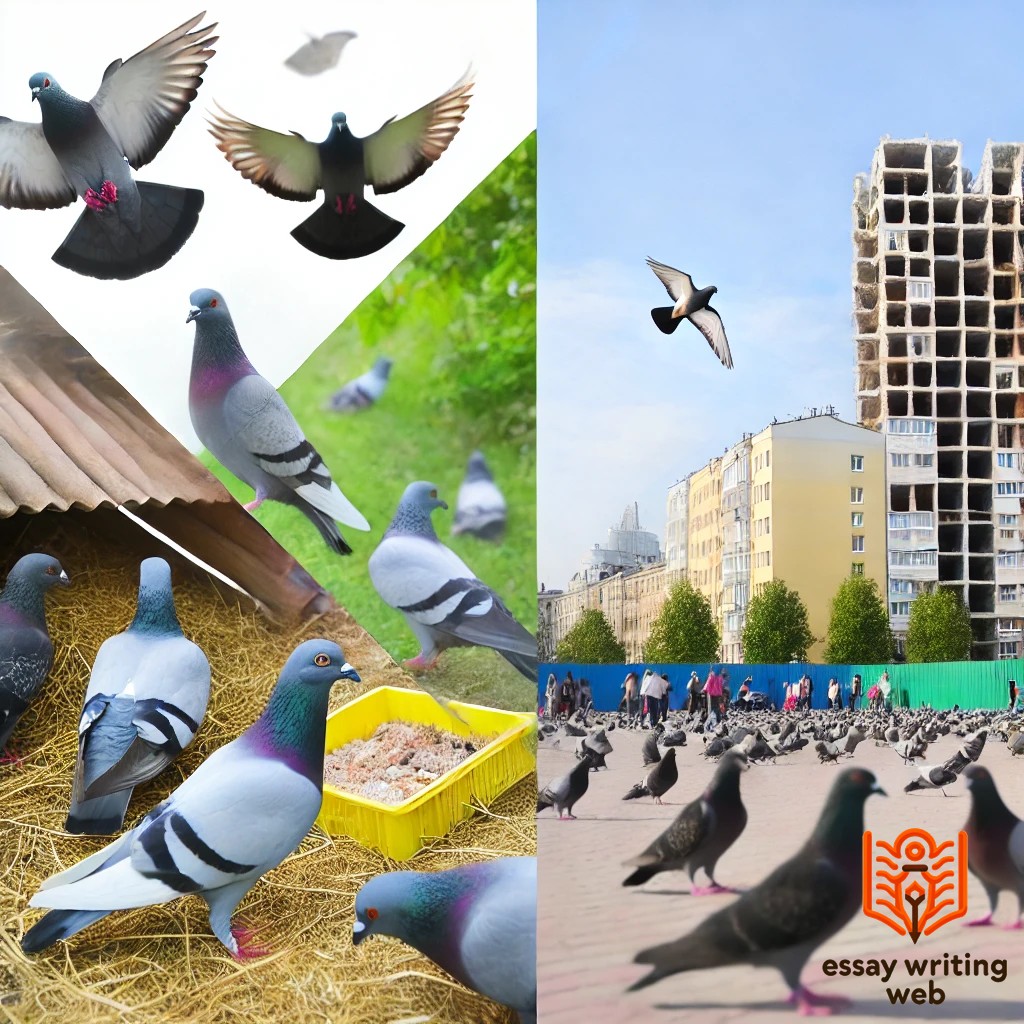 Essay Writing Web
Essay Writing Web
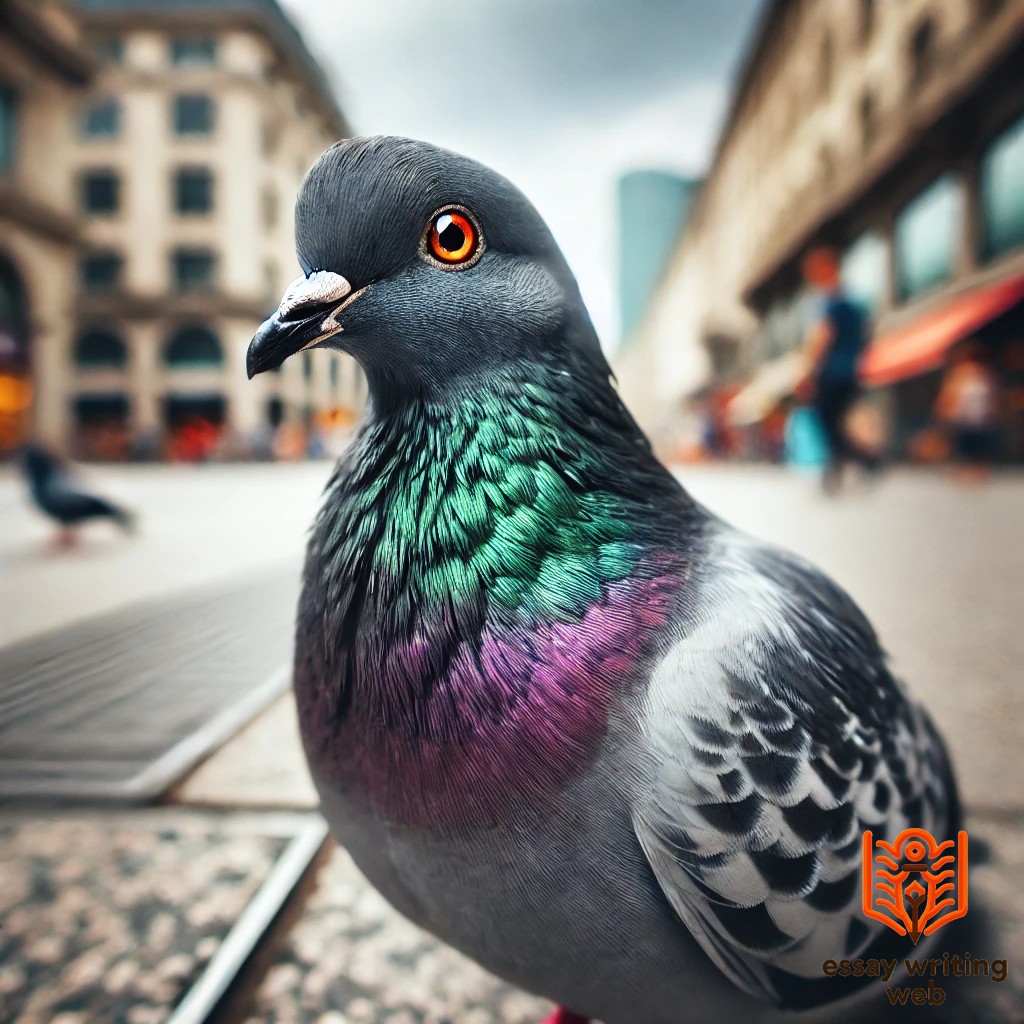
 18-09-2024
18-09-2024
 www.essaywritingweb.com
www.essaywritingweb.com
Pigeons, scientifically known as Columba livia, are one of the most recognizable birds across the world, often seen in both bustling urban environments and serene rural settings. These birds have managed to carve out a niche for themselves in human habitats, adapting remarkably well to life in cities. Their presence in large numbers is a common sight, especially in public squares, parks, and rooftops, where they scavenge for food and interact with humans on a daily basis.
Historically, pigeons have played an important role in human civilization, extending far beyond their contemporary image as urban birds. In ancient times, pigeons were revered for their homing abilities, used for carrying messages across long distances, particularly in times of war. Messenger pigeons were instrumental during both World Wars, and their reliability earned them a special place in military history. Additionally, pigeons have held symbolic importance in various cultures. They are often seen as representations of peace, love, and harmony, with the white dove, a close relative, being a universal symbol of peace.
In terms of physical characteristics, pigeons are medium-sized birds with robust bodies and short necks. They are known for their iridescent plumage, particularly around the neck, which reflects shades of green and purple in sunlight. These birds are highly social and typically travel in flocks, establishing strong communal bonds.
Despite their widespread presence and adaptability, pigeons are sometimes regarded as pests in urban areas due to their droppings and the potential health risks they pose. However, their ability to thrive alongside humans is a testament to their resilience. Whether admired for their beauty or viewed as a nuisance, pigeons remain a fascinating species intricately tied to human life and history.
Pigeons, known for their adaptability and widespread presence, have a distinctive physical appearance that makes them easily recognizable. They are medium-sized birds, typically ranging between 29 to 37 cm in length, with a wingspan of about 60 to 70 cm. Their body is plump, and they have short legs and a rounded head, contributing to their stout and compact look.
The coloration of pigeons varies, but the most common variety found in urban areas is the rock pigeon, which has a bluish-gray body. One of the most striking features of these birds is the iridescent plumage around their necks, reflecting hues of green, purple, and pink, especially when exposed to sunlight. This glossy neck region, known as the "hackle," gives them a unique, almost metallic sheen that contrasts with their otherwise plain body.
Pigeons have orange or red eyes, encircled by a pale gray or white ring, which adds to their sharp, alert expression. Their beak is small, slender, and usually black or dark gray, ending in a fleshy cere at the base, which is characteristic of birds in the pigeon family. Their feet are typically red or pink, with three toes facing forward and one facing backward, allowing them to perch easily.
Though their physical appearance may seem simple, the vibrant neck plumage, sharp eyes, and compact structure make pigeons stand out as resilient and fascinating creatures that have thrived in various environments around the world.
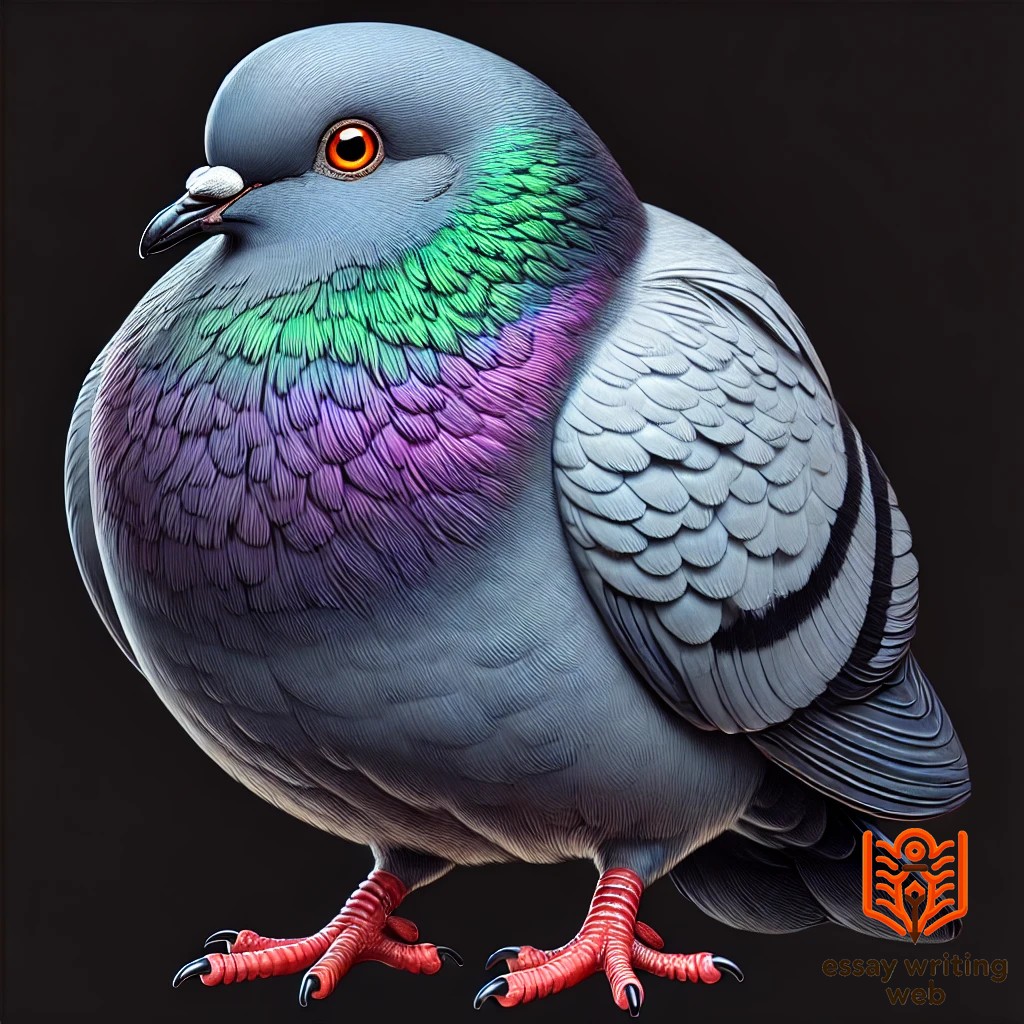
Pigeons are one of the most diverse bird species, with over 300 different types found across the world. These birds, belonging to the family Columbidae, come in various sizes, colors, and patterns, each type adapted to specific environments or bred for particular purposes. Here are some of the notable types of pigeons:
Rock Pigeon (Columba livia): The most common pigeon species, especially in urban areas, is the rock pigeon. It is typically bluish-gray with iridescent feathers on its neck and has become synonymous with city life. Originating from Europe, North Africa, and Asia, rock pigeons have adapted well to human environments and are often found nesting in buildings and bridges.

Homing Pigeon: Homing pigeons are a variety of rock pigeons bred for their exceptional navigation skills. Used historically as messenger birds, particularly in wars, they are known for their ability to find their way home from long distances. Their keen sense of direction has made them an iconic symbol of communication and reliability.
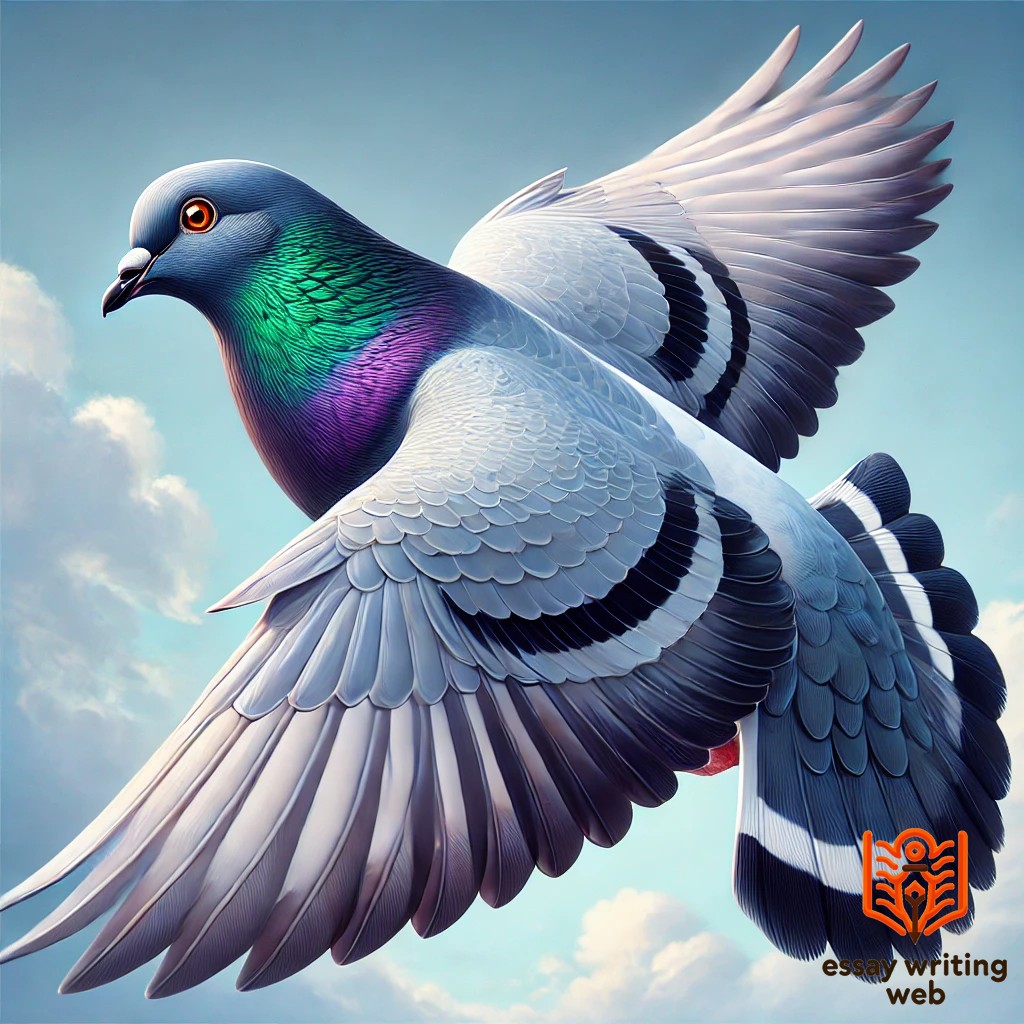
Fantail Pigeon: The fantail pigeon is known for its distinctive, fan-shaped tail, which gives it a unique appearance. These pigeons are often kept as ornamental birds and are popular in exhibitions and bird shows. They have a rounded body, and their tail feathers are typically spread out in a dramatic display, making them stand out among other pigeon breeds.
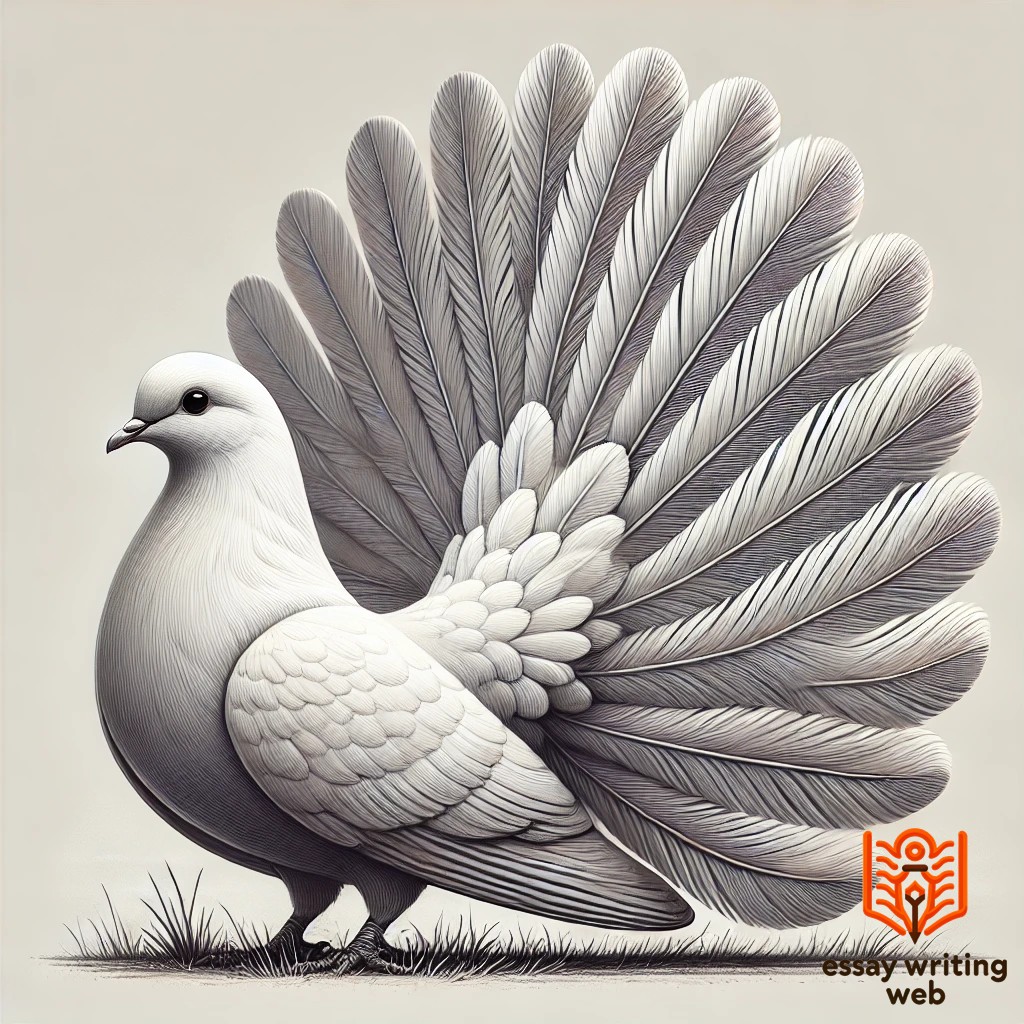
Carrier Pigeon: Carrier pigeons, another type of homing pigeon, were historically used to carry messages over long distances. Although they are no longer commonly used for this purpose, their legacy lives on as symbols of endurance and loyalty. They are often confused with the modern homing pigeon but were specially bred for message-carrying purposes in the past.
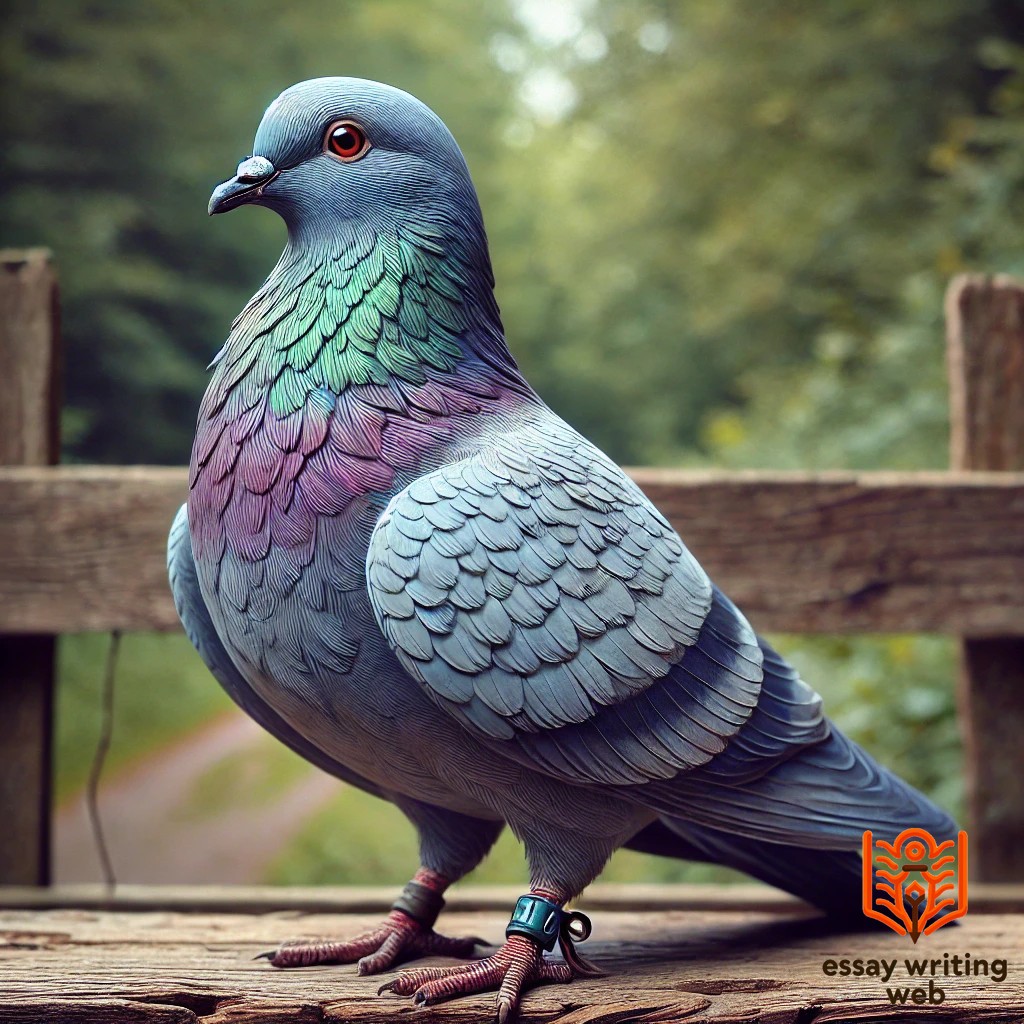
Band-tailed Pigeon (Patagioenas fasciata): Native to the Americas, the band-tailed pigeon is a larger species, found in forests and mountain regions. These birds have a grayish body, a pale band on their tail, and are typically shy in nature, preferring wooded areas over urban landscapes. They are more common in the western United States and are known for their deep, cooing calls.
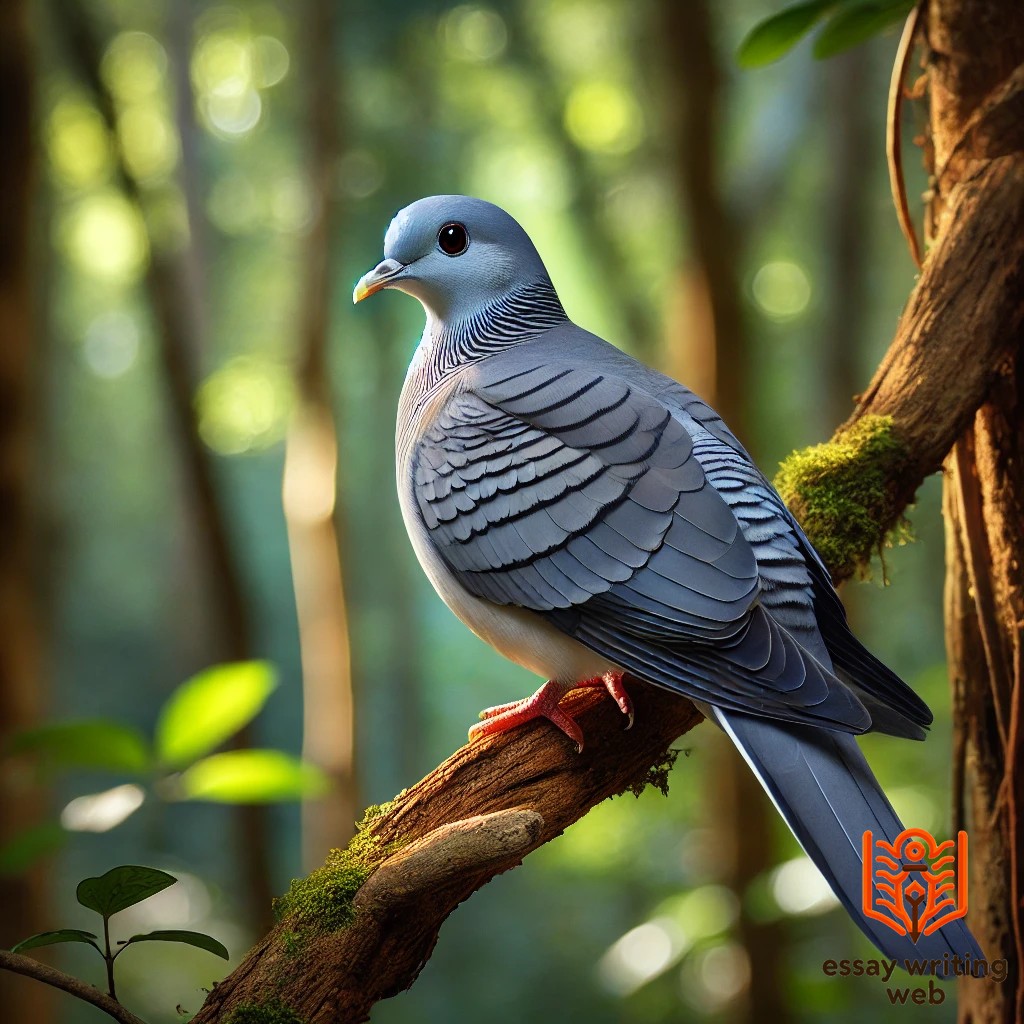
Victoria Crowned Pigeon (Goura victoria): Native to New Guinea, the Victoria crowned pigeon is one of the largest and most striking pigeon species. With its vibrant blue feathers, impressive crest, and red eyes, this pigeon is often regarded as one of the most beautiful in the world. It thrives in dense tropical rainforests and is known for its graceful movements and regal appearance.
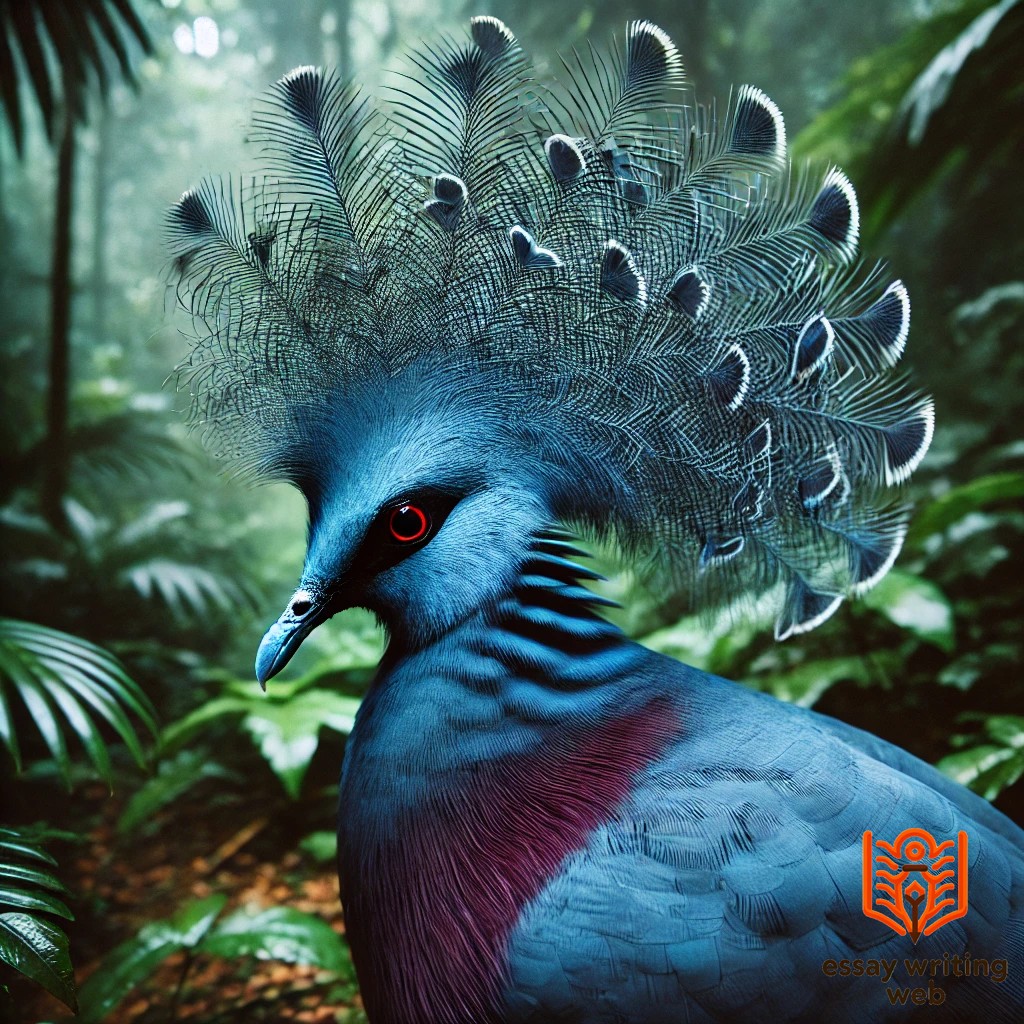
Oriental Frill: A domesticated pigeon, the Oriental Frill is admired for its decorative appearance, with feather patterns and colors that resemble intricate lacework. These pigeons are kept primarily as pets and for show purposes. Their striking appearance and small size make them popular among pigeon breeders.
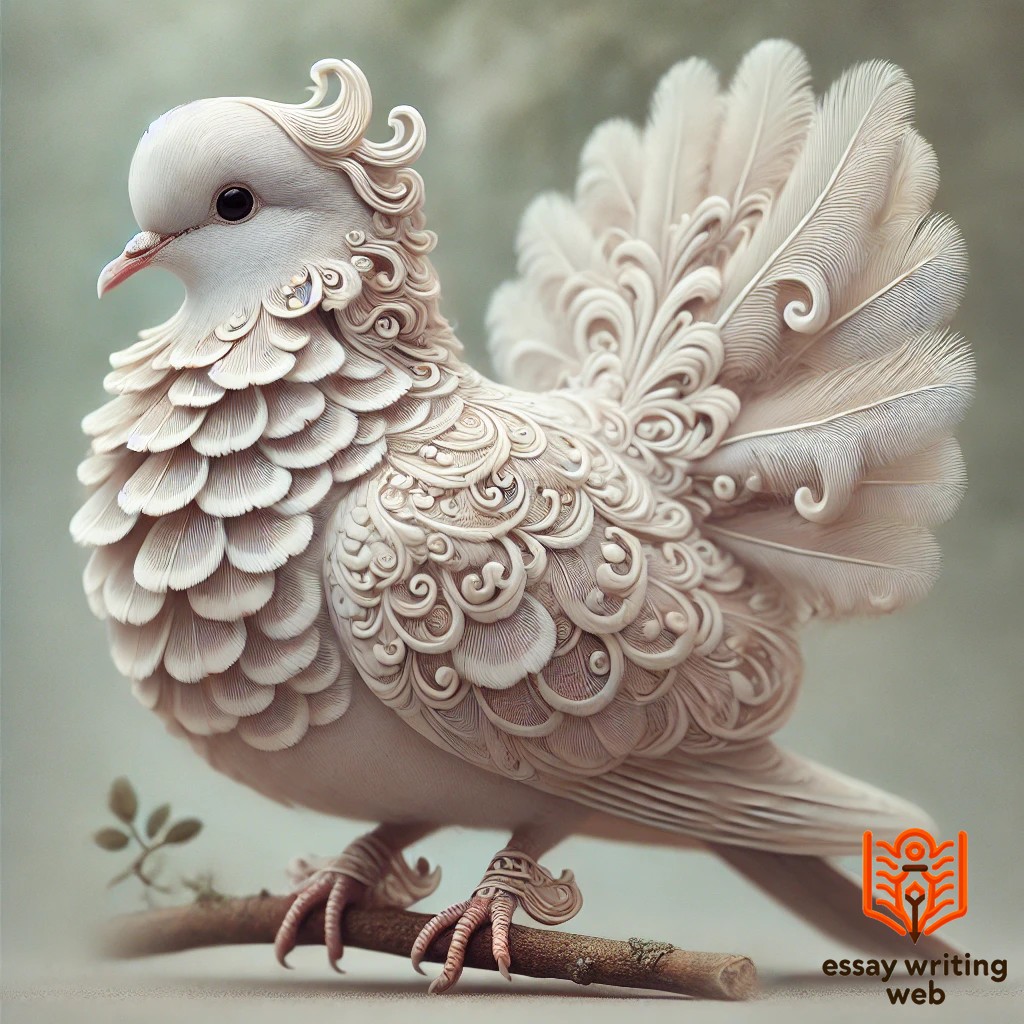
Each type of pigeon has its unique traits, from those adapted to the wild to those bred for specific human purposes, such as message delivery, ornamentation, or exhibitions. Their diversity demonstrates their incredible adaptability and importance in various aspects of human history and culture.
Pigeons are highly adaptable birds, found in a wide range of habitats across the globe. Their natural habitat includes rocky cliffs, coastal areas, and open grasslands, but over time, they have become one of the most prominent species in urban environments. Pigeons, particularly the rock pigeon (Columba livia), are commonly seen in cities, thriving amidst human populations.
In urban areas, pigeons build their nests on building ledges, bridges, and other high structures, mimicking the cliffs they would naturally inhabit in the wild. These elevated locations offer them protection from predators and access to abundant food sources. Parks, plazas, and streets provide pigeons with a constant supply of discarded food, seeds, and grains, allowing them to flourish in cities.
In rural areas, pigeons prefer open landscapes such as fields and farmland, where they forage for grains and seeds. Coastal pigeons are often found nesting on sea cliffs, taking advantage of the natural protection these sites offer.
Their ability to thrive in both natural and human-made environments is a testament to their adaptability. Whether in bustling cities or serene countryside settings, pigeons have established themselves as a resilient species capable of thriving in diverse habitats.
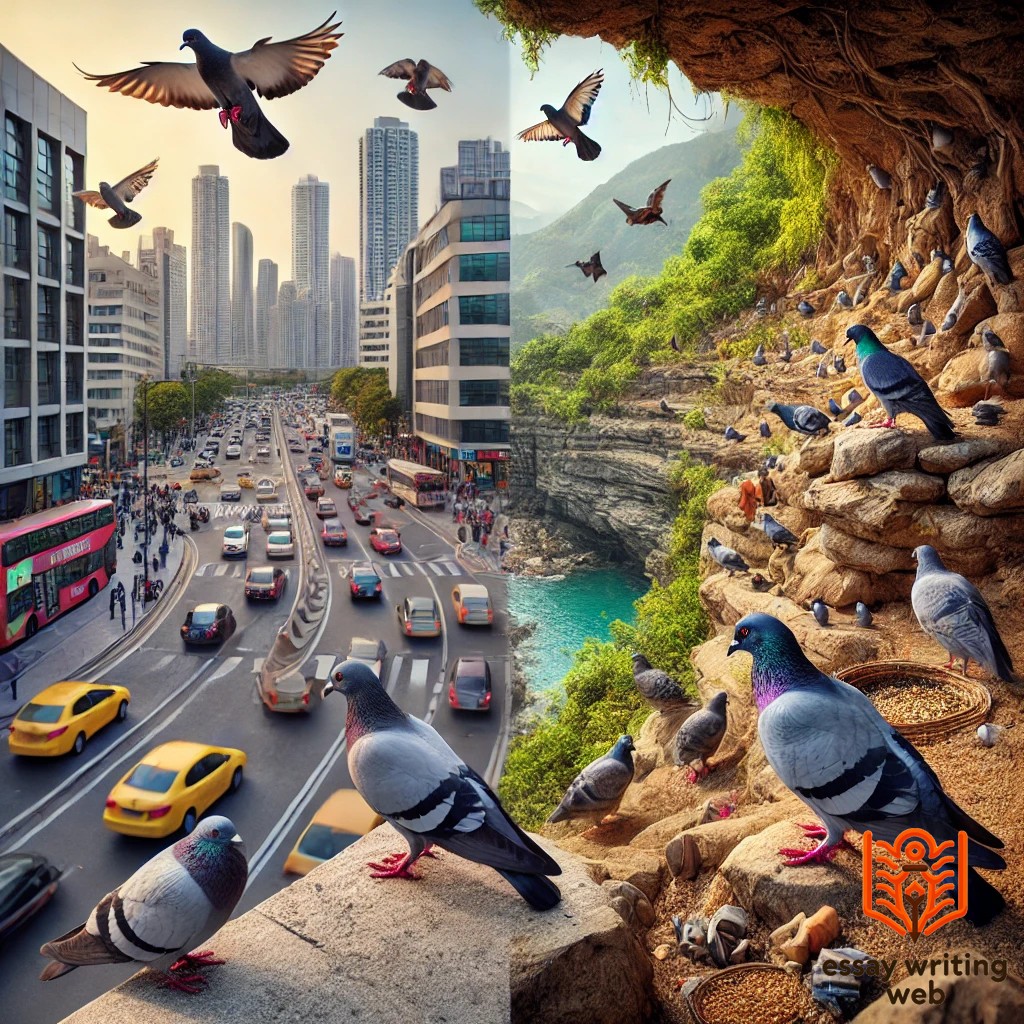
Pigeons, known for their adaptability, exhibit different feeding habits depending on their environment. In the wild, pigeons primarily feed on seeds, grains, fruits, and small invertebrates. They are ground feeders, foraging in open fields, forests, and coastal areas for food. Wild pigeons consume a diet rich in plant-based items, helping them maintain a balanced nutritional intake. They often forage in flocks, searching for food during the day and returning to their nesting sites in the evening.
In cities, however, pigeons' feeding habits have evolved due to the availability of human-provided food. Urban pigeons scavenge for discarded food items like bread, rice, and processed snacks left by people. Public parks, streets, and plazas often serve as feeding grounds, where pigeons rely heavily on scraps and handouts from passersby. While urban food sources are abundant, they are often lower in nutritional value compared to the pigeons' natural diet.
Despite the change in diet, pigeons in cities have adapted well to human-made environments, thriving on what they find. However, this reliance on processed food can sometimes lead to health issues among urban pigeons. Their versatility in both natural and urban settings highlights their resilience and ability to survive in diverse habitats.
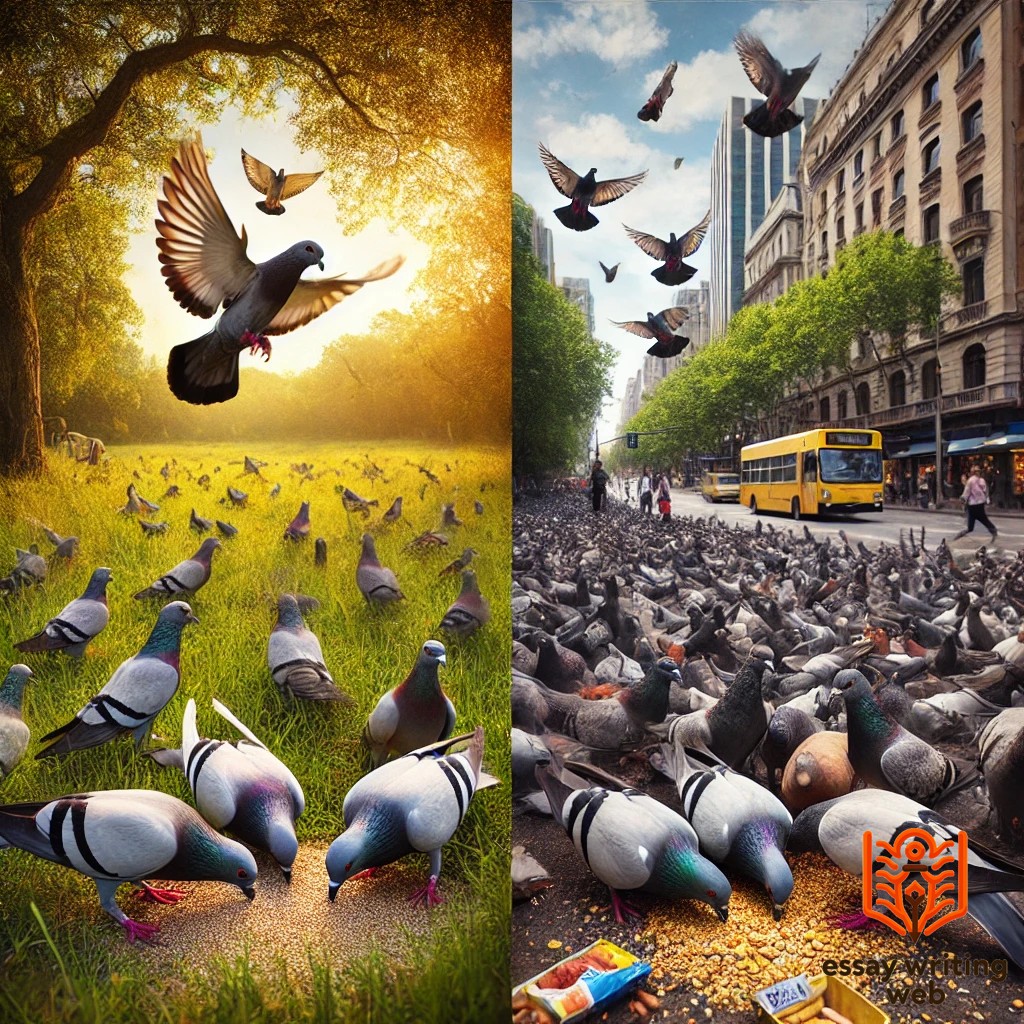
Pigeons are highly social birds, displaying fascinating behaviors that have helped them thrive in a variety of environments, especially in close proximity to humans. They are gregarious by nature, often found in flocks that provide safety in numbers, allowing them to forage, rest, and navigate together. This flocking behavior also helps in warding off potential predators, as there is greater vigilance in a group setting.
Pigeons are known for their remarkable homing ability, a behavior that has been extensively studied. They can navigate back to their nests over vast distances, using a combination of the Earth's magnetic field, the position of the sun, and even landmarks for guidance. This innate navigation skill has made pigeons valuable as messenger birds throughout history, especially during wartime.
In their daily lives, pigeons spend much of their time foraging for food, which they often do in the early morning and late afternoon. Their diet largely consists of seeds, grains, and in urban settings, human scraps. Pigeons also exhibit strong nesting behaviors, typically using materials like twigs, leaves, and debris to build their nests in elevated locations such as rooftops, ledges, or cliffs.
Communication among pigeons involves various cooing sounds and physical displays. The males often puff up their chest and spread their tail feathers to attract females, performing a courtship dance that includes circular movements. Overall, pigeons are highly adaptive, resilient birds with behaviors finely tuned for survival in both wild and urban settings, maintaining strong social bonds and excellent navigation skills.
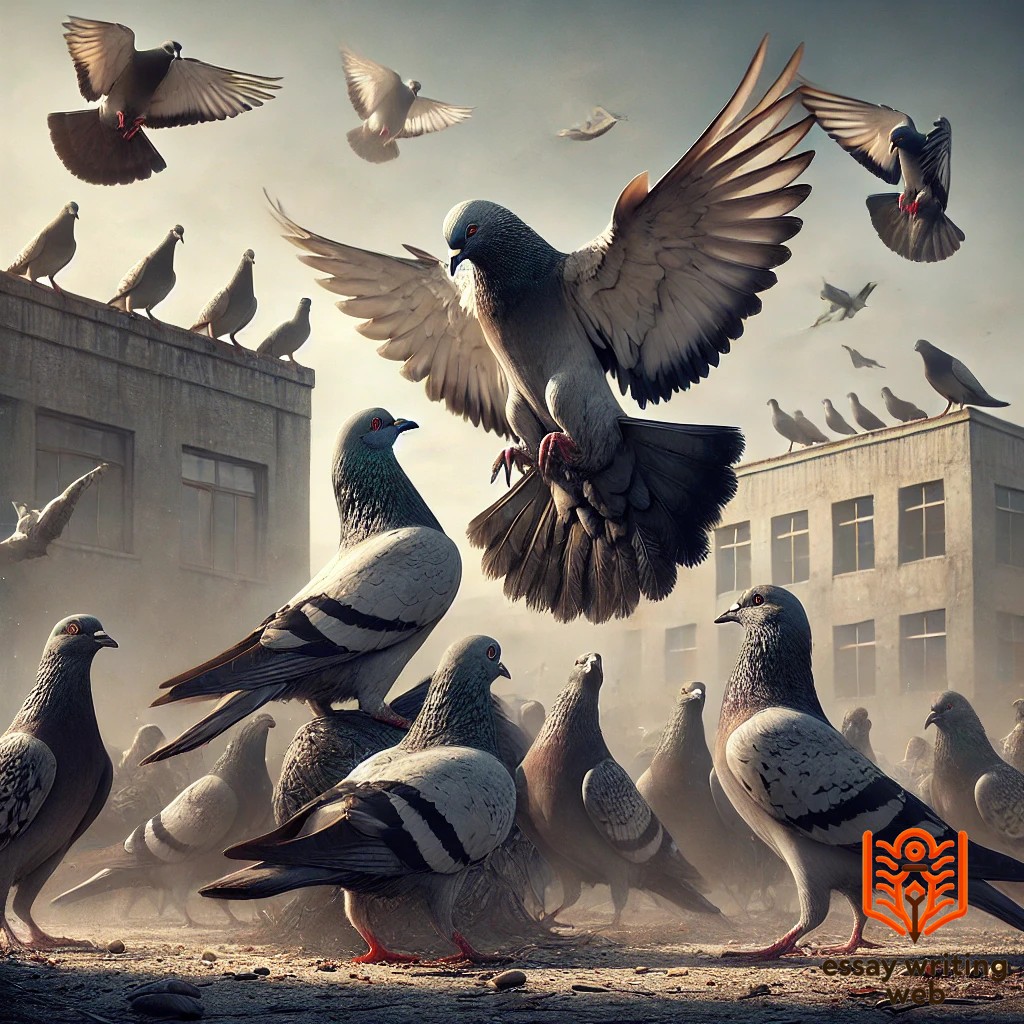
Pigeons are known for their distinct communication methods, which primarily include a series of cooing sounds and physical gestures. Cooing serves as the most common form of vocal communication among pigeons, playing an important role in courtship, bonding, and warning other pigeons of potential threats. These sounds are produced by both males and females, though males tend to be more vocal, especially during mating displays.
Male pigeons often use cooing to attract mates, puffing out their chests and performing a courtship dance while emitting a rhythmic coo. This sound serves as both a way to express interest and to assert dominance over rival males. Once a pair forms a bond, the cooing helps strengthen their relationship, especially during nesting and rearing their young.
In addition to mating calls, pigeons use cooing to maintain flock cohesion. Soft coos are exchanged between members of a flock to communicate their presence and establish social harmony. Pigeons are also capable of producing louder, sharper sounds to signal danger. These warning coos alert others in the group to nearby predators or threats, prompting the flock to take flight.
Overall, pigeon communication through cooing and body language is essential for maintaining social structure, attracting mates, and ensuring survival in both urban and natural environments.
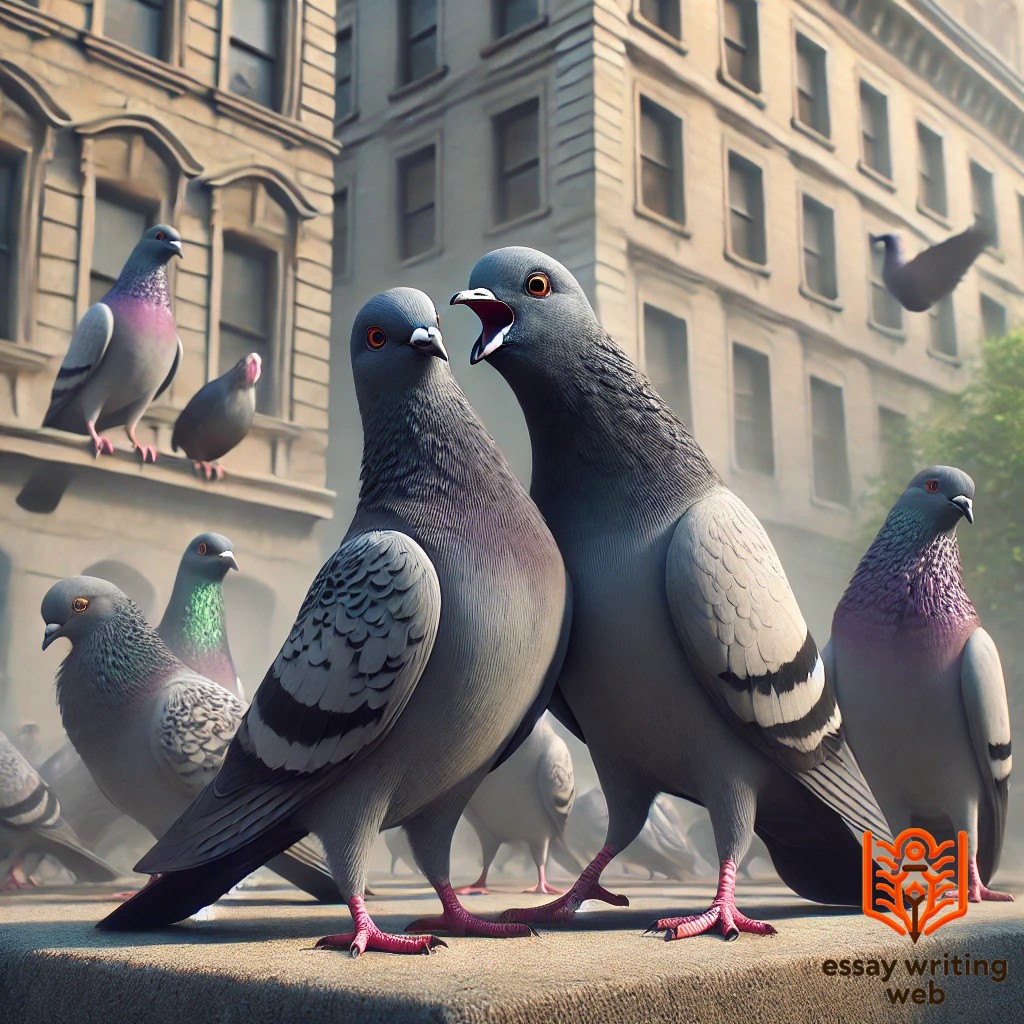
Pigeons have played a significant role in human history and culture for centuries, symbolizing peace, endurance, and loyalty. Historically, pigeons were used as messengers due to their remarkable homing ability. They were relied upon in ancient civilizations like Egypt and Persia to carry important messages across vast distances. During both World Wars, pigeons were used extensively to send military communications when other methods were unreliable. Their contribution to war efforts earned them a reputation as symbols of endurance and loyalty.
Culturally, pigeons have been revered in various societies. In ancient Greece, pigeons were associated with Aphrodite, the goddess of love, making them symbols of love and beauty. Similarly, in Christianity, the dove, a type of pigeon, represents peace and the Holy Spirit. The image of a white dove with an olive branch is a universal emblem of peace and reconciliation.
Pigeons also hold a place in art and literature, often symbolizing freedom and hope. From Picasso’s "Dove of Peace" to numerous literary references, these birds have captured human imagination for centuries.
Despite their humble appearance, pigeons have left an indelible mark on human history and culture, representing everything from communication and survival to peace and beauty.
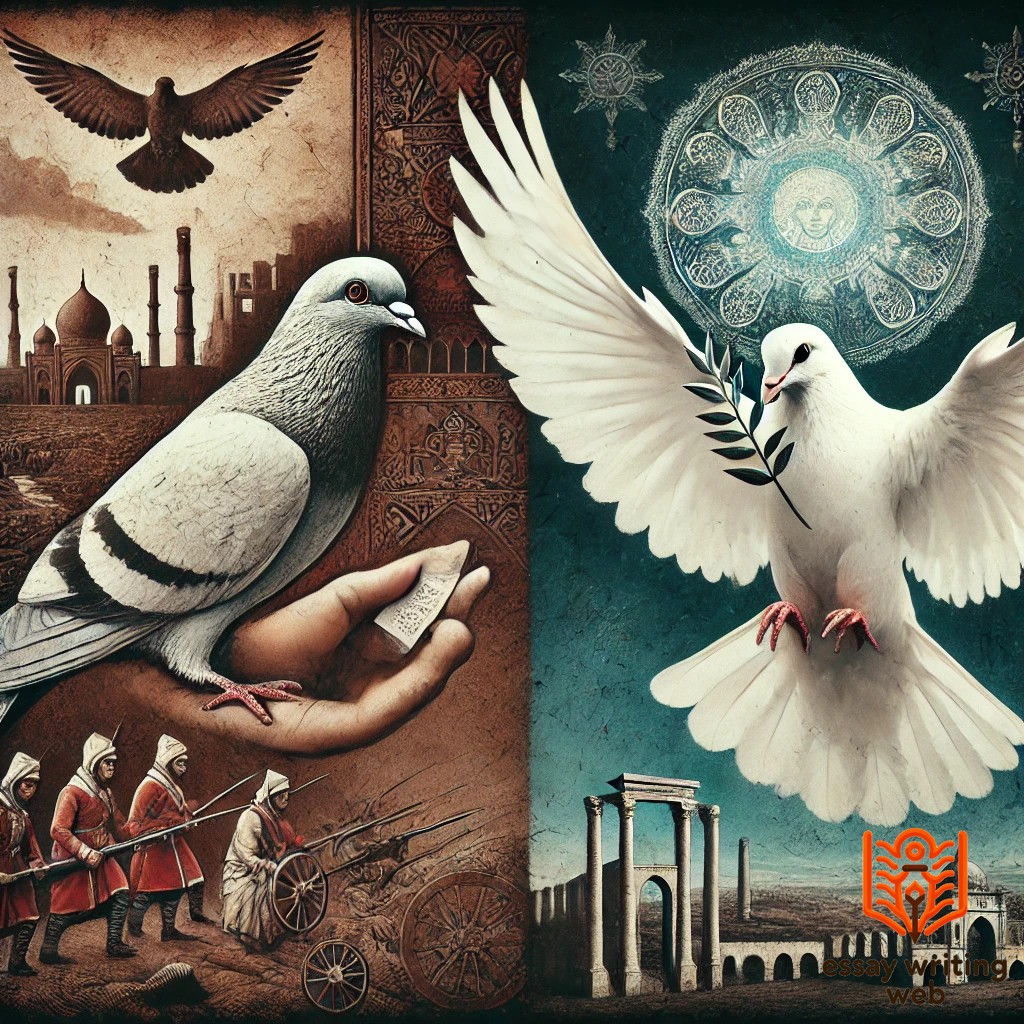
Pigeons have long coexisted with humans, offering both benefits and drawbacks in various environments. One of the major benefits of pigeons is their role in ecosystems as seed dispersers. By feeding on fruits and seeds, pigeons contribute to the spread of plant species, helping maintain biodiversity. Historically, pigeons were also essential as messengers, especially during wars, when their reliable homing ability was used to deliver vital information.
In modern cities, pigeons provide a connection with nature, offering a sense of wildlife amidst urban sprawl. They are often enjoyed by birdwatchers and people who feed them in parks. Pigeons have also contributed to scientific research, particularly in studies of navigation and memory, due to their remarkable homing instincts.
However, there are notable drawbacks associated with pigeons. In urban areas, their droppings can cause damage to buildings and monuments, eroding stone surfaces over time. Pigeon droppings also pose health risks, as they can harbor harmful bacteria and fungi, leading to respiratory problems. Additionally, overpopulation of pigeons in cities can lead to them being regarded as pests, competing for space with other wildlife and causing noise pollution.
Overall, pigeons offer ecological and historical value, but managing their populations in urban areas is necessary to balance the benefits with the potential drawbacks.

Humans have had a profound impact on pigeon populations, shaping their behavior, habitats, and even survival. Pigeons, particularly the rock pigeon (Columba livia), have thrived in urban areas due to human activities. Cities provide an abundance of food sources in the form of discarded scraps, as well as nesting sites on buildings and bridges, mimicking the cliffs pigeons naturally prefer. This has led to large pigeon populations in urban centers worldwide.
Historically, humans domesticated pigeons for various purposes, including communication, racing, and even food. Pigeons were used as messengers during wars, valued for their homing instincts. While their role as messengers has diminished with modern technology, humans continue to interact with pigeons through feeding, which encourages their proliferation in cities.
However, human impact has not always been positive. The abundance of processed and unhealthy food in cities has led to malnutrition and health issues among urban pigeon populations. In some areas, pigeons are viewed as pests, and efforts to control their populations through deterrents or culling have been implemented. Additionally, the destruction of natural habitats due to urbanization has reduced the availability of wild spaces for pigeons.
Overall, human activity has facilitated the growth of pigeon populations in cities, but it has also contributed to environmental and health challenges for these birds.
